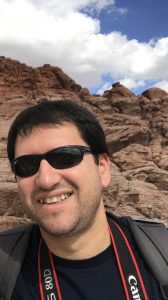As the University of Mississippi School of Engineering expands course offerings in its environmental engineering program, Matteo D’Alessio will be at the forefront of their development.
The new assistant professor of civil engineering joined the UM faculty earlier this year. After teaching environmental engineering last spring, the Sgurgola, Italy, native will develop and teach water and wastewater engineering this fall. He also plans to develop and teach environmental monitoring in spring 2021.
“I am excited at the prospect of developing an environmental engineering track within the Department of Civil Engineering,” D’Alessio said. “I appreciate the spectrum of core facilities on campus and the nearby research stations, as well as the prospect of collaborating with faculties from multiple departments as well as national agencies.”
D’Alessio earned his bachelor’s and master’s degrees in environmental engineering from Sapienza University in Rome, Italy. He received a Ph.D. in civil and environmental engineering from the University of Hawaii at Manoa.
He has also been a postdoctoral researcher with the Water Resources Research Center at the University of Hawaii at Manoa and the Nebraska Water Center at the University of Nebraska-Lincoln.
“Dr. D’Alessio brings with him a track record of outstanding research experiences,” said Jacob Najjar, chair and professor of civil engineering. “We are extremely pleased to have him at the helm of our environmental engineering degree program.”
After obtaining his Professional Engineer license in Italy in 2006, D’Alessio later became a research assistant professor at the NWC. Areas of research and professional interests include fate and transport of chemicals of emerging concerns, natural filtration, low-cost water treatment technologies for rural and developing countries, water reuse in agricultural systems, and citizen science.
“My short-term goals are to continue developing new environmental engineering courses,” D’Alessio said. “Long term, I want to increase the adoption of water reuse to attenuate the current stress affecting food and agriculture due to the growing population, limited resources and challenges of climate variability.
“I also want to improve low-cost water treatment technologies that can also be applied to projects located in rural areas and developing countries and to develop citizen science projects focused on water quality involving high school students and members of local communities.”
D’Alessio’s wife, Sarah, lives in Kailua, Hawaii, with their three dogs and three cats.
